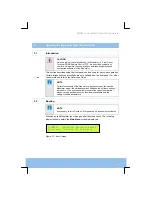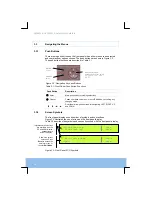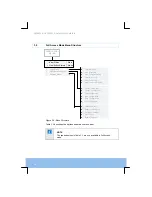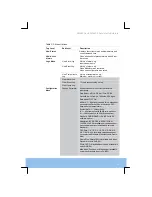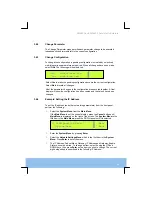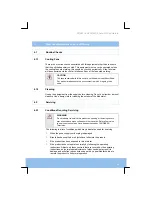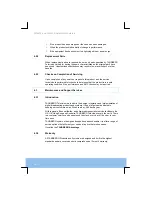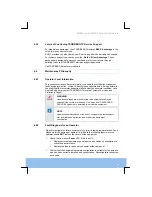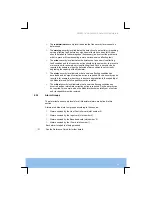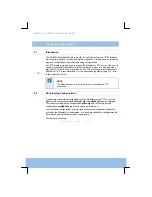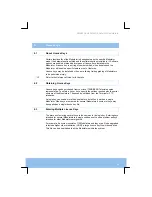
SM6630 and SM6635 Satellite Modulators
28
!"
Confirm that inappropriate operator action is not causing the problem, and
that the equipment software set-up, via the local terminal, is capable of
performing the task being asked of it. Change set-up parameters as
necessary.
(Refer to the
Reference Guide
for details.)
!"
Use the test menus and options provided by the local terminal.
!"
Switch off the equipment if it becomes unusable, or to protect it from further
damage.
!"
Check that the fans are unobstructed and working correctly.
!"
Call a trained and approved Service Engineer or contact Customer Services.
NOTE
A Modulator
must
be connected to an Encoder or Multiplexer (or
otherwise fed with a suitable MPEG-2 transport stream) and
monitoring IRD in order to carry out tests in isolation. This may entail
removing the stand-by Encoder or Multiplexer from service, if one is
available, to enable local diagnostics to be carried out.
4.5
Alarm and Failure Reporting
4.5.1 Introduction
This section describes the alarm and fail conditions which cause the alarm/fail
relays to be actuated and which are recorded in the Alarm log. They are dependent
on the cards fitted and, in some cases, the mode of operation of the Modulator.
The alarms reported are dependent upon the Alarm Mask settings. See the
Reference Guide
for further details.
This section defines the alarm-reporting scheme in the SM6600 range of Satellite
Modulators.
4.5.2
Alarm Severity Levels
Each alarm is assigned one of six severity levels. These levels provide an
indication of how it is perceived that the capability of the Modulator has been
affected. Those severity levels which represent service affecting conditions ordered
from most severe to least severe are
critical
,
major
,
minor
and
warning
. The six
severity levels are defined below.
!"
The
cleared
severity level indicates the clearing of one or more previously
reported alarms. This alarm clears all alarms for the Modulator that have the
same alarm type, probable cause and specific problems (if given).


